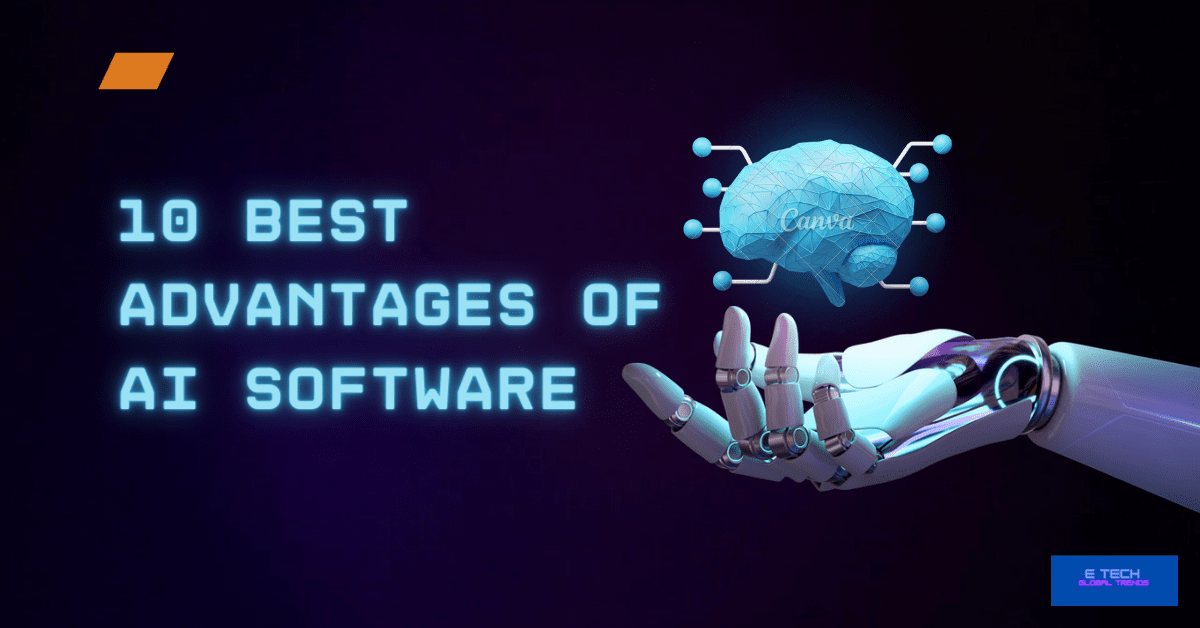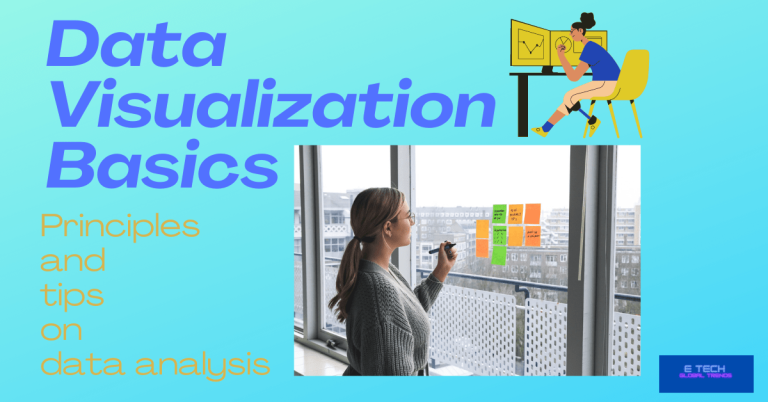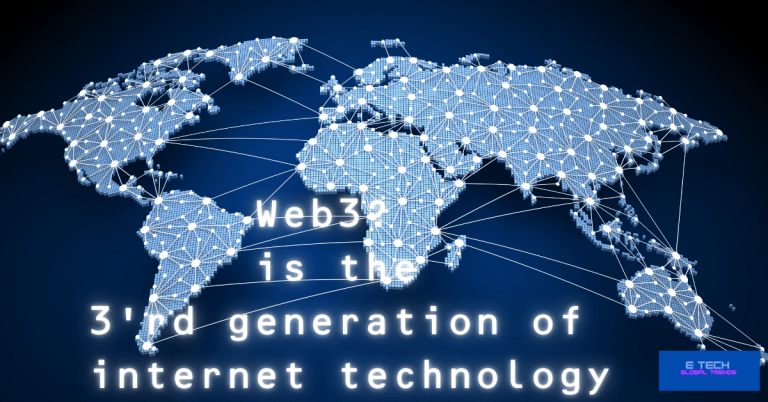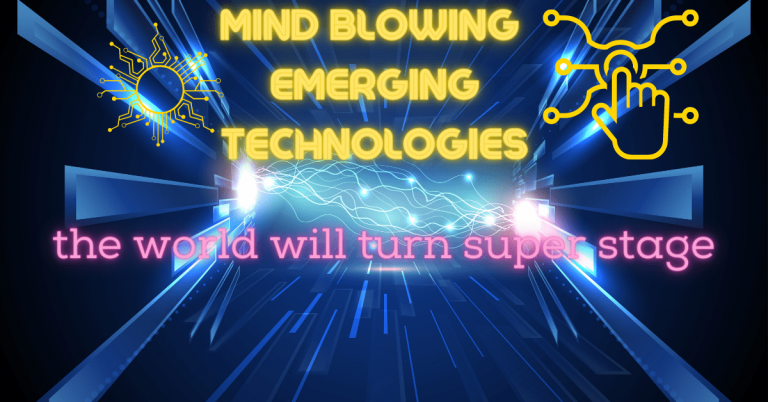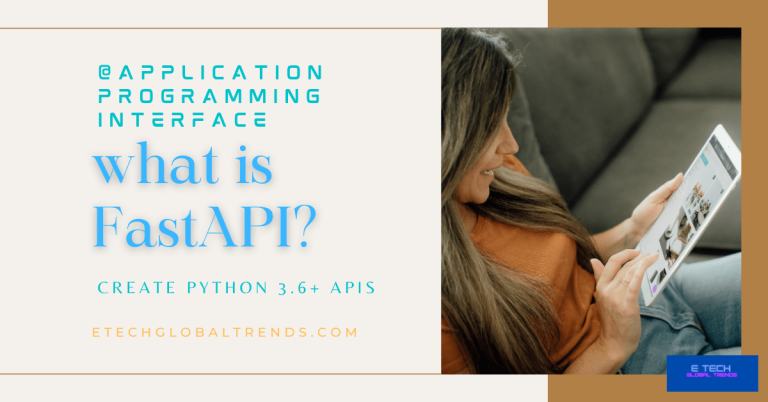AI Software Trends
The world is moving rapidly. People are searching for easy tasks. Now many human jobs are already automated. Today’s topic focuses on “AI Software Trends”.
What does AI software mean?
Software that uses artificial intelligence methods and technology to do activities that normally require human intelligence is referred to as artificial intelligence software, or AI software for short. Human-like cognitive processes including reasoning, problem-solving, learning, comprehending natural language, and data adaptation are all modeled, replicated, or enhanced by these software programs.
AI software is capable of a vast array of features and uses,
such as:
1.0 Machine Learning
Machine learning algorithms are frequently included in AI software, allowing the system to slowly increase performance by learning from data. This covers tasks including natural language processing, recommendation systems, and picture and speech recognition.
2.0 Natural Language Processing (NLP)
NLP artificial intelligence software can produce and comprehend human language, which is necessary for sentiment analysis, language translation, chatbots, and virtual assistants.
3.0 Computer Vision
By interpreting and comprehending visual data, these AI applications open up new avenues for the development of technologies such as object identification, facial recognition, and driverless cars.
4.0 Expert systems
They are AI systems that operate on rules and rely on an inference engine and knowledge base to tackle intricate issues in certain domains, like finance analysis or medical diagnosis.
5.0 Robotics
Artificial intelligence is essential for managing automation systems and robots, enabling them to carry out semi-autonomous or autonomous tasks in industries including manufacturing, healthcare, & logistics.
6.0 Predictive analytics
These artificial intelligence (AI) tools foresee or predict the future based on past data, which helps companies find patterns in the market, streamline operations, or stop fraud.
7.0 Reinforcement learning
This kind of artificial intelligence software is used to teach agents.
such as autonomous systems or game-playing AI, how to make a series of decisions in a given situation.
8.0 Speech Recognition
AI software is now capable of making Voice assistants & transcription services, that can translate spoken words into text.
9.0 GANs
Generative Adversarial Networks are a kind of artificial intelligence software that is frequently using in creative applications to produce original content, such as text, music, or images.
10.0 Data Analytics
AI-powered software for data analytics can process and examine big datasets to find trends, patterns, and insights that are difficult for people to find through manual research.
AI software vs other types of software?
These are some key distinctions between AI and other software:
The learning capability
of artificial intelligence software allows it to adjust and enhance its performance periodically by analyzing and analyzing data, in contrast to traditional software that follows pre-established guidelines.
Ability to Make Decisions
Artificial intelligence software can make predictions or decisions based on patterns and data analysis. This allows it to handle complicated scenarios without the need for explicit programming in each case.
NLP
Natural Language Processing, AI software can comprehend, interpret, and produce human language, allowing it to be used in applications that traditional software usually cannot, such as chatbots and language translation.
Problem-solving in unpredictable situations
Artificial intelligence (AI) software is excellent at tracking issues in dynamic or unpredictable situations where traditional software’s fixed rules may not be sufficient.
Pattern Recognition & Prediction
Artificial intelligence (AI) software is adept at identifying patterns and trends in large datasets, which is useful in a variety of industries like marketing, banking, and healthcare.
Continuous Improvement:
Unlike many other software types, artificial intelligence (AI) software can learn from fresh data, experience, or feedback over time to improve its performance.
Autonomy and Adaptability
Certain AI systems possess the ability to function independently, carrying out tasks without continual human supervision, while simultaneously adjusting to novel data or alterations in their surroundings.
Complex Algorithms
Unlike traditional software, artificial intelligence (AI) software frequently uses complex algorithms, machine learning models, or neural networks that call for sophisticated programming and processing capacity.
To put it simply, artificial intelligence (AI) software differs from traditional software in that
- it can learn,
- make decisions,
- adapt, and complicated,
- comprehend language,
- solve problems in uncertain situations,
- recognize patterns, and
- continuously improve itself.
10 best advantages of AI software
In the current digital era, artificial intelligence software, or AI software, is becoming more and more significant for the following reasons:
Automation and Productivity:
AI software can increase productivity and efficiency by automating time-consuming and repetitive processes. It can do intricate calculations, data analysis, & decision-making procedures far more quickly than people, which results in streamlined processes and less manual labor.
Data Analysis & Insights
Artificial Intelligence software can swiftly and precisely analyze large amounts of data. It can uncover important patterns, trends, and insights from data processing and interpretation that humans might miss. These understandings can stimulate innovation, enhance corporate procedures, and guide strategic decision-making.
Future Growth and Innovation
Artificial Intelligence software stimulates new ideas and creates opportunities in a variety of sectors. It gives companies the freedom to venture into unexplored territory, create novel goods and services, and upend established procedures. Innovation powered by AI Software Trends has an opportunity to improve society and boost economic expansion.
Personalization & Customer Experience
By utilizing customer data and preferences, artificial intelligence software makes tailored experiences possible. To provide individualized recommendations, information, and services, it can examine the behavior, interests, and interactions of its clients. Customer loyalty, engagement, and satisfaction are all increased by this customization.
Chatbots & virtual assistants
They are driven by artificial intelligence (AI) and offer sophisticated and automated client service. They can provide information, help with transactions, and comprehend and reply to user inquiries. These AI-powered exchanges improve client support, speed up response times, and expand available resources.
Predictive analytics & forecasting
AI programs can forecast and predict with accuracy by examining past data and trends. It assists companies in forecasting market movements, consumer behavior, trends, and demand patterns. Strategic planning and proactive decision-making are made possible by this predictive capacity.
Fraud Detection or Security
Artificial intelligence software can spot trends and abnormalities in data to find signs of fraud as well as risks and cybersecurity dangers. It is capable of identifying possible security breaches and implementing preventive steps by analyzing system logs, user behavior, and network traffic. Security solutions driven by AI improve data protection and protect sensitive data.
Artificial Intelligence (AI) software can be comprehended.
And interpret natural language, facilitating communication that is similar to that of humans. It enables people to interact with technology and obtain information more easily by powering chatbots, voice assistants, and language translation services.
Robotics and Autonomous Systems
AI software is the driving force behind developments in robotics and autonomous systems. It makes it possible for robots to see, learn, and decide in real-time, which has led to the creation of robotic process automation, industrial automation, and driverless cars, among other things.
10. Healthcare including Medical Diagnosis
By aiding in medical diagnosis, evaluating medical pictures, and forecasting disease outcomes, artificial intelligence software can completely transform the healthcare industry. To provide precise diagnosis and treatment suggestions, it may evaluate patient data, symptoms, as well as medical records.
What role will AI in software development and design play in the future?
Before 2022, artificial intelligence was not a hot topic. With major modifications, it has now entirely changed how industries interact with machines. A wide range of professions have begun to use AI productively.
Studies show that human-machine collaboration yields superior performance compared to individual efforts. AI is already being used extensively by people, and in the upcoming years, it will collaborate more than before. The AI revolution will displace existing jobs while also creating new opportunities, which is the biggest change.
In the upcoming years, software designers will be able to advance by employing AI software design approaches and becoming fully qualified AI software development engineers. Expertise in AI software development can be attained by software engineers with a strong background in coding and programming.
Now this is our last question
Can AI software cheat users and the creator?
Of course, yes.
Why?
AI software is not perfect. It has reached a certain level. That’s it
But, under the following considerations, due to the AI Software Trends
Artificial intelligence software lacks objectives, motives, or the capacity to deceive users. However, if AI is there to unethically by those who develop it or manage it, the results could be beneficial and accurate. As an illustration:
1. Biased Algorithms:
Artificial intelligence algorithms that are educated on biased input may generate unfair or biased outcomes. If this impacts specific people or groups disproportionately, it can interpret as “cheating”.
2. Manipulative Design
Artificial Intelligence systems have the potential to be created in a way that coerces people into making actions or decisions that aren’t in their best interests. This is particularly true of systems utilized in user interfaces.
3. Data Privacy Issues
so, If AI systems aren’t sufficient protection, misuse or improper handling of user data may result in privacy violations.
4. False Advertising
It might be deemed misleading and detrimental to consumers who depend on reliable information if AI-powered goods or services make inflated promises about their capabilities.
5. Security exploits
Malevolent actors may manipulate AI systems to deceive users or obtain unauthorized access to confidential data if they are susceptible to hacking or other vulnerabilities.
To stop AI systems from serving in manners that hurt or deceive users, developers, businesses, and legislators must have strong security measures, transparent policies, and ethical standards.
Ensuring appropriate AI adoption requires ongoing audits, supervision, and accountability systems.
Why does AI image creation look like nearly the same character.?
When, You’ve described a phenomenon, in which AI-generated photos frequently seem to have similar features. It can link to the AI model’s design and training set.
Allow me to explain a few of the causes of this:
1. Training Data Bias
An AI model is likely to produce images that reflect its biases if it undergoes training on a dataset mostly composed of particular kinds of images, styles, or attributes.
Suppose the data used for training predominantly comprises photographs of a particular character or style, for instance. In that case, the AI might be trained to produce images that resemble those it has encountered often.
2. Model Architecture
The AI model’s architecture may also be very important. Certain models may bias or have constraints in how they learn and produce material, especially if their creation for specialized purposes like creating images.
A model architecture that lacks diversity or flexibility may find it difficult to generate a broad range of outputs, which could cause the generated images to converge around certain shared traits.
3. Overfitting
When a model overspecializes in its training set and undergeneralizes when applied to fresh, untried data, this has to identify as overfitting. As a result, pictures that lack variety yet resemble the training set may produce.
If the model lacks methods to promote diversity and can train using a small dataset, it can generate images with similar characteristics.
4. Training circumstances and Hyperparameters
The variety of generated images can be impacted by the training circumstances and hyperparameters, which are settings that regulate the learning process. Inadequate selection of hyperparameters or training settings might result in less-than-ideal outcomes and a monotonous output of information.
- Creating more representative and varied training datasets,
- optimizing model architectures,
- modifying hyperparameters, and
- utilizing overfitting mitigation strategies
are frequently required to address these problems.
To increase AI models’ capacity to produce a variety of realistic outputs, researchers are always working to improve them. it can anticipate future models to exhibit greater diversity and inventiveness in picture production as the discipline develops.
Will AI software collapse AI art-related businesses in the future?
AI’s effects on the art world are a complicated and developing subject. Even if generative models for art have become more and more popular, AI technologies are not guaranteed to bring down AI art-related enterprises. Rather, they might redefine and reshape some parts of the sector. Certainly.
Here are some things to think about:
1. Fresh Opportunities
AI can give businesses and artists new avenues to pursue their goals. It can employ as a creative tool, supporting rather than taking the place of artists in their work. Businesses and artists who use AI as a supplemental tool may discover new avenues for self-expression and audience interaction.
2. Coexistence
Artificial intelligence and human creativity are compatible. Both conventional and AI-generated art are valued by many artists and art aficionados. AI-generated art may not be able to match the individuality and warmth of human-created art.
3. Artistic Collaboration
By collaborating with AI, certain artists can better utilize technology to further their artistic vision. This method may result in original and creative works that fuse AI power with human intuition.
4. Market Dynamics
Some elements, such as trends, cultural developments, and personal tastes, have an impact on the art market. Instead of creating an industry collapse, AI art might develop into a specialist business or section inside the larger art market.
5. Ethical and Legal Concerns
The application of AI to art presents ethical and legal concerns, such as those about intellectual property, authorship, and copyright. More frameworks and laws might require to address these issues when AI-generated art becomes more common.
Ultimately, even though AI Software Trends are expected to have significant effects on the art world, it is not easy to imagine AI ruining companies that deal with art.
Rather than that, it might change the game, open up new avenues, and force us to reconsider how important technology and artists are to the creative process. Businesses pursuing the AI art area will need to successfully navigate these developments and use AI as a tool for creativity if they hope to survive.
Summary-AI Software Trends
to sum up, Artificial intelligence (AI) software can use to automate processes, improve decision-making, and enhance user experiences across a wide range of businesses and disciplines, including healthcare, finance, entertainment, and customer service. Numerous computer platforms, including cloud-based services and edge devices including smartphones & Internet of Things devices, can run these apps. Certainly.
Hope this content helps.
Cheers!
Read more on related topics AI content detector, Sentinel AI

